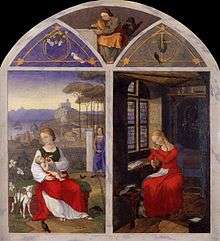Shulamite



A Shulamite is a person from Shulem. It is the ascription given to the female protagonist in the Song of Songs in the Hebrew Bible. In the King James Version and other Bibles, it is the Song of Solomon or Canticle of Canticles.
She is most likely called the Shulammite because she came from an unidentified place called Shulem. Many scholars consider Shulammite to be synonymous with Shunammite (“person from Shunem”). Shunem was a village in the territory of Issachar, north of Jezreel and south of Mount Gilboa. Other scholars link Shulem with Salem, believing Solomon’s bride was from Jerusalem. Still others believe that the title Shulammite (“peaceful”) is simply the bride’s married name, being the feminine form of Solomon (“peaceful”) and only used after her marriage to the king.
Solomon uses passionate language to describe his bride and their love (Song 4:1–15). Solomon clearly loved the Shulammite—and he admired her character as well as her beauty (Song 6:9). Everything about the Song of Solomon betrays the fact that this bride and groom were passionately in love and that there were mutual respect and friendship, as well (Song 8:6–7). This points to the fact that the Song of Solomon is the story of Solomon’s first marriage, before he sinned by adding many other wives (1 Kings 11:3). Whoever the Shulammite was, she was Solomon’s first and truest love.
Outline
There seems to be a progression in time that the successive songs that make up this book reveals. Franz Delitzsch was a proponent of this view. However, not all scholars believe that the individual songs are sequential.
I. The superscription 1:1
II. The courtship 1:2—3:5
A. The beginning of love 1:2-11
1. Longing for the boyfriend 1:2-4
2. The girl's insecurity 1:5-8
3. Solomon's praise 1:9-11
B. The growth of love 1:12—3:5
1. Mutual admiration 1:12—2:7
2. Increased longing 2:8-17
3. The pain of separation 3:1-5
III. The wedding 3:6—5:1
A. The procession 3:6-11
B. The consummation 4:1—5:1
1. The bride's beauty 4:1-7
2. The groom's request 4:8
3. The bride's love 4:9-11
4. The bride's purity 4:12-15
5. The bride's surrender 4:16—5:1
IV. The maturing process 5:2—8:4
A. The problem of apathy 5:2—6:13
1. Indifference and withdrawal 5:2-8
2. Renewed affection 5:9-16
3. Steps toward reconciliation 6:1-3
4. Restoration of intimacy 6:4-13
B. Communicating affection 7:1-10
1. The wife's charms 7:1-6
2. The husband's desires 7:7-9
3. The ultimate unity 7:10
C. The wife's initiative 7:11-13
D. Increased intimacy 8:1-4
V. The conclusion 8:5-7
VI. The epilogue 8:8-14
A. The past 8:8-12
B. The present 8:13-14
Contemporary culture has affected the interpretation of this book more than that of most other Bible books. For many years, believers considered this book to be a revelation of God's love for the believer and the believer's love for God, expressed in vivid metaphorical language. This was the predominant viewpoint for centuries when most people did not talk about the intimacies of human physical love publicly. There are now many interpreters who believe this book is a revelation of two human beings' love for each other exclusively. Some have even suggested that it is an inspired marriage manual that God has given us to enable us to develop strong marriages. Some Jewish rabbis in ancient times believed this was its purpose as well.